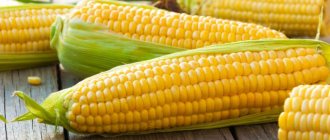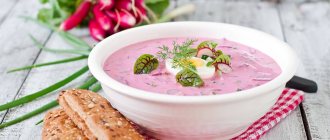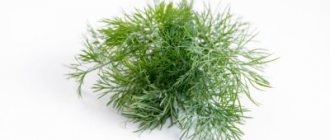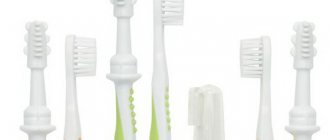Oatmeal is very familiar to everyone from early childhood. Such food is full of many beneficial elements for the health of the body of both adults and children. However, it should be introduced into the diet of an infant carefully and in accordance with certain rules. At what age can you give it to your baby? How much and how to cook oatmeal for a child so that it is not only tasty, but also as healthy as possible?
Oatmeal is considered one of the healthiest products, including for children's menus
About the beneficial properties of oatmeal
Oatmeal is an excellent source of carbohydrates, which are vital for a baby's growing body. In this regard, porridge is usually eaten in the morning to get a supply of energy for the whole day. In addition to this, cereals also contain a lot of valuable components:
- magnesium and potassium - necessary for the full functioning of the heart muscle, the activity of the nervous and respiratory systems;
- phosphorus and calcium are indispensable for the normal development of the baby’s musculoskeletal system;
- iodine – plays a vital role in the course of metabolic processes;
- iron – necessary to maintain normal blood composition;
- B vitamins – participate in digestion processes and have a positive effect on children’s skin;
- fiber – regulates intestinal motility;
- antioxidants – increase the body’s immune strength, protect it from negative external factors;
- amino acids – promote the removal of toxins, tissue regeneration, and are responsible for the full functioning of the endocrine system;
- inositol – participates in hematopoietic processes.
The benefit of porridge also lies in the fact that it envelops the entire mucous membrane of the stomach and intestines from the inside. As a result, the digestive organs will be protected from aggressive and harmful substances.
Oatmeal gently envelops the baby's stomach and protects it from aggressive influences.
Allergic reaction to oatmeal
Despite the obvious benefits of oatmeal, pediatricians consider the presence of gluten in it to be one of its main “disadvantages”. This is a type of vegetable protein that is poorly absorbed by the newborn’s body, as a result of which it can cause allergies in the baby. This phenomenon occurs quite often among children, but it usually goes away over time. However, some people are completely intolerant to gluten, in which case products containing gluten are prohibited for them, including oatmeal.
An allergy to oatmeal in infants usually appears when they are first introduced to the cereal. Its symptoms can be very pronounced or barely noticeable. The most common signs of allergies are:
- prolonged aching pain in the abdominal area;
- increased flatulence and bloating;
- diarrhea that becomes permanent;
- lethargy, weight loss, itching and burning of the skin.
As practice shows, as young children grow older, the body stops responding to plant protein, but for adults it is no longer possible to get rid of this allergy.
Oatmeal as a complementary food
From the first days of life, the only type of nutrition for a baby is mother's milk or a special formula that replaces it, but over time, the baby's diet needs to be expanded. Porridge is often used as complementary food. Oatmeal is considered one of the most useful, but you need to feed your baby this food correctly.
At what age can oatmeal be introduced into complementary foods?
At what age can a baby be offered complementary foods in the form of oat porridge? It is impossible to accurately determine this age; this issue must be approached strictly individually. In general, pediatricians give the following recommendations:
- Children who are bottle-fed can be offered oatmeal at 6-7 months (more details in the article:).
- If your baby is fed only breast milk, you should introduce oatmeal into his menu no earlier than 8 months; it is by this age that the body will begin to produce special enzymes that can digest gluten-containing cereals.
- Rolled oats should be introduced into complementary foods only when the baby gets used to rice, corn and buckwheat porridge (more details in the article:).
For breastfed children, the introduction of oatmeal can be postponed for a period of 8 months
Features of feeding
Oatmeal should be introduced into an infant's diet very carefully, be sure to dose the amount of food and closely monitor the baby's well-being. In this case, it is necessary to adhere to a number of important recommendations from doctors and nutritionists:
- The first porridges for feeding a newborn should be cooked in water; it is better to cook them in cow's milk only after the baby reaches one year of age.
- The consistency of the porridge should be liquid and without lumps.
- The portion of porridge that can be offered to a baby for the first time should be equal to 1 teaspoon, then the volume should be gradually increased.
- If during the first feeding the baby refuses the offered porridge, you should not force him to eat it; it is better to try adding a little breast milk to the food next time.
- Complementary foods in the form of oatmeal should be given to the baby in the first half of the day before the main feeding with breast milk or formula.
- If, as a result of feeding porridge, a newborn develops diarrhea or a skin rash, the product should be temporarily removed from the diet.
- After a year, you can add pieces of fruit or fruit puree, a little sugar, and salt to the porridge.
Porridge recipes for babies
The easiest way is to dilute a special porridge for babies in boiling water. After all, what is sold in children's stores is designed specifically for kids. These cereals are expensive, but they last a long time. At first, the baby will not eat much.
If you can’t buy special baby porridge, you can cook it from regular cereal. Simply preparing porridge for infants, recipes can be found on the Internet or in a special cookbook.
How to cook oatmeal? You need to bring a small amount of water to a boil, then sort and wash the cereal, which then needs to be poured into boiling water. When the porridge is cooked, it should be thrown into a sieve and wiped. Then boiled milk is added, and the whole mass is boiled again. Before serving, you can add a teaspoon of butter or fruit puree. Oatmeal contains a lot of potassium, phosphorus, protein, iron, magnesium and B vitamins.
Porridge for babies should be prepared in the following proportions: for 100 ml of vegetable broth or water you need to take a teaspoon of cereal. Rice and buckwheat are poured into cold water, and oatmeal and semolina into boiling water.
Buckwheat porridge for babies
Buckwheat porridge is considered hypoallergenic and nutritious, so it can be introduced first. Buckwheat is rich in iron, calcium, phosphorus, manganese, iodine, PP and B vitamins. It contains protein and 18 amino acids.
Buckwheat porridge for babies is easy to prepare. First, the cereal needs to be sorted, then washed and dried. After it is completely dry, use a coffee grinder or blender to turn the cereal into flour. Next, pour 100 ml of water into the pan and add a teaspoon of ground cereal, bring to a boil and cook over low heat for about fifteen minutes. Then pour a little milk and cool. You can drink this porridge from a bottle because it turns out liquid. When the baby starts eating with a spoon, take two teaspoons of cereal per 100 ml of liquid.
After a year, you no longer need to grind cereals. Half a glass of buckwheat needs to be sorted and washed, pour the buckwheat into a pan and pour a glass of boiling water. After the buckwheat boils, you need to drain the water and add new water. Cook for thirty minutes, add a little milk and sugar towards the end of cooking.
Corn porridge for babies
Corn porridge can be given from eight months. Corn is not as healthy as buckwheat, but it contains a lot of fiber, which works in the stomach like a vacuum cleaner. If the baby's tummy is swollen and it is assumed that he is in the process of fermentation, you need to introduce corn porridge into the diet.
Corn porridge for babies is prepared as follows. First of all, you need to rinse the cereal and fill it with water. After boiling, cook over low heat for thirty minutes. If it turns out that the corn is too hard, you need to cook it more. At the end, you can add milk, sugar, butter and pass it all through a blender.
Rice porridge for babies
In order to prepare rice porridge, you need to take twenty grams of rice flour, fifty milliliters of water, a glass of milk and a teaspoon of sugar. You don’t have to go shopping in search of rice flour; you can simply grind the rice in a coffee grinder. Rice flour is diluted in cold water, then gradually poured into boiling milk. In order to avoid lumps, the porridge must be stirred all the time. Cooking time: five minutes.
Rice porridge for infants can be fraught with constipation, so it can be given rarely and in small portions.
Semolina porridge for babies
Semolina porridge is considered the least healthy of all porridges. There is nothing in it except starch. Many children love semolina because it is delicious, especially if you cook it in milk and add jam.
Semolina porridge for infants is first made liquid, gradually its consistency becomes thicker. It is better not to give it to children under one year old, since semolina contains substances that are poorly digested in the stomach and can lead to various diseases of the digestive system.
Porridge with milk for babies
Parents must remember that proper nutrition is the key to the health of their children. Soups, cereals, fresh fruits and vegetables should be in the child’s diet every day.
Porridge with milk for babies is not prepared right away. First, you need to give dairy-free cereals, or add skim baby milk, expressed breast milk, or formula.
Mother's milk for a baby is the most useful and priceless delicacy in the world. However, over time, it will be necessary to expand the child’s diet, introducing complementary foods in the form of cereals that are saturated with fats and carbohydrates, as well as useful microelements and vitamins.
Introducing porridge into a child’s diet
Pediatricians recommend introducing complementary foods in the form of healthy and tasty porridge from the age of five months. But at the same time, it is very important to determine the moment when porridge should be introduced into the diet. Pay attention to your child's behavior. If he asks for the breast very often, it means that the baby is no longer getting enough. Any new food should be introduced in small doses. For the first time, one small spoon of porridge will be enough for a five-month-old baby.
Evaluate your child’s reaction, because the first tasting of porridge can be either an unpleasant surprise or a pleasant discovery for him. If your baby turns away from a spoon with porridge, do not panic and under no circumstances try to force food into his mouth. Try offering him a different porridge, adding a little breast milk.
If a child has recently suffered from an illness or is sick, do not rush to introduce complementary foods and do not burden the child’s immune system. Wait a couple of weeks, then you can safely offer your baby new dishes
About the benefits of porridge
Buckwheat porridge should be the first in a baby’s diet; it is rightfully considered the absolute champion in terms of nutritional content and is easily digestible by the baby’s stomach, has a beneficial effect on the functioning and formation of all systems and organs. Buckwheat contains a large amount of: - vegetable protein, - salts of phosphorus, potassium and magnesium. There is almost six times more iron in this cereal than in semolina or rice.
Rice porridge is considered hypoallergenic, so it is always appropriate in baby food. It contains few proteins, but is very rich in mineral and vitamin composition. Rice porridge should be included in the diet of infants, but not often, as this can lead to problems with stool. Oatmeal is considered second in nutritional value and healthiness. It contains a lot of: - potassium,
Protein, - iron, - phosphorus, - magnesium, - B vitamins. Oatmeal contains a large amount of vegetable fats.
After ten months of age, you can introduce corn porridge into your baby’s diet. The cereal is saturated with iron and starch, the phosphorus and calcium content is not very high. Corn porridge also requires a long cooking time. Millet porridge is a little heavy for a child’s body, so it is inferior to other types of porridge due to poor digestion. It should be introduced only from one and a half years of age.
How to cook porridge for a baby?
Cooking healthy porridge for babies is not particularly difficult. You just need to rinse the cereal thoroughly and dry it a little. Prepare flour from the cereal using a coffee grinder. In the first stages, it is recommended to cook porridge with breast milk, water or vegetable broth. Cow's milk is not suitable for this purpose, as it is too heavy for a child's stomach.
It is absolutely unacceptable to cook porridge for a baby by eye. The concentration should be as follows: per 100 milliliters of water or breast milk, take 5 grams of crushed cereal. Accordingly, if you take more liquid, then you will need more flour. Rice and buckwheat should be poured into cold water, and oatmeal and semolina into hot water. Never use a microwave oven to prepare porridge.
Add 5 grams of butter to the finished porridge (only if the baby does not suffer from allergic reactions). As for salt or sugar, it is recommended to avoid using these ingredients for as long as possible in order to avoid the rapid development of taste preferences in the baby.
From 5-6 months, many children need complementary foods. It is recommended to introduce porridge first into a child’s diet. Dishes from various cereals are rich in carbohydrates, proteins that are beneficial for growth, vitamins and essential microelements. Parents can give their baby cereal from baby food or prepare cereals themselves.
Employees of the Daughters-Sons online market will tell you what and how to cook porridge for your child so that the dish becomes an effective source of energy and brings maximum benefits.
Choosing the right porridge for your baby
Many young parents are tormented by doubts: is it better to buy a ready-made product in a store or cook porridge yourself? Nowadays there is a huge assortment of similar food for babies on the shelves. The opinions of pediatricians on this issue also vary, since each product has its own disadvantages and advantages.
Oat porridge, prepared at home, is good for the following:
- Whole grain contains much more vitamins and other useful elements than processed grain, porridge made from it is much healthier for an infant;
- homemade food has a natural taste and does not contain any impurities;
- You can choose the grind size of the cereal yourself, which will allow you to adapt to your baby’s chewing skills.
However, it will take mom a lot of time to prepare such porridge, and if the cooking technology is violated, the product will lose all its valuable qualities. In addition, to grind cereals, you need to have additional equipment in the kitchen - a blender or coffee grinder.
Store-bought porridge in a box is enriched with vitamins, and getting it ready is very simple and quick, which is very important for a young mother with a baby in her arms. The disadvantages of this product include its high cost and the likelihood of the presence of synthetic additives in it.
Which porridge should you choose for feeding your baby? The best option is to alternate homemade with store-bought ones; for this, it is better to start complementary feeding with a product in a box, and then gradually add self-prepared food to the diet. It’s impossible to say for sure which porridge your baby will like best – some children love store-bought food, while others are happy to eat homemade.
How to prepare porridge with baby formula
The only ingredients you will need are water, cereal and formula intended for feeding children from six months of age. It should be remembered that the mixture cannot be heated or boiled too much, otherwise all the nutritional and beneficial elements will be lost, and its taste properties will also change for the worse.
How to dilute porridge with the mixture and prepare a delicious dish for your child:
- Grind the cereal in a blender.
- Pour it into a saucepan and pour boiling water in a ratio of 1:2.
- Place the pan on the fire and boil for several minutes.
- Cool the porridge slightly and add the milk mixture to it - 1/2 of the serving required for one feeding.
- Mix everything well and feed the baby.
There is no need to add sugar, salt or butter to this porridge. It will be tasty for the baby even without these ingredients.
You can prepare porridge using the mixture in an even simpler and faster way: prepare the mixture according to the instructions, and then dilute it with a special dairy-free porridge for baby food. It only takes a couple of minutes to prepare this dish for your baby.
Even inexperienced young mothers know very well that too much depends on proper nutrition of the baby, including full development and health. Doctors advise feeding your baby breast milk, but what to do if the lactation period ends too early? The question of whether porridge can be diluted with a mixture is best asked to a doctor. The doctor will certainly recommend how to do this correctly and which formulations to give preference to.
The peculiarity of dairy-free products for children is that they do not contain cow's milk, which often causes an allergic reaction in children. Doctors recommend that children with allergies use this particular product, which eliminates irritation, rashes and digestive tract disorders. Preference in choosing complementary foods should be given to rice, wheat, semolina, and barley.
How to properly prepare food and is it recommended to use mixtures for dilution? Doctors insist that if the lactation period has not yet ended, it is better to take breast milk, it is more beneficial for the child. If breastfeeding is already over, use milk formula, which will increase the taste and nutritional quality of the baby's dish.
Be sure to carefully study the instructions and carry out preparation in accordance with the manufacturer's requirements. Basic rules to follow:
- use the liquid warm (a hot mixture will lead to the formation of lumps);
- Stir the mixture thoroughly until smooth;
- exclude the addition of sweet ingredients to improve taste;
- use cooked food immediately;
- Storing, even in the refrigerator, is strictly prohibited.
Another condition is to monitor the child’s reaction to food if it is given for the first time. If you notice alarming signals from a small organism, immediately abandon the selected composition and consult a doctor for advice.
What cereals are good for children?
All cereals are healthy in their own way. The best porridges in a child's diet are oatmeal and buckwheat.
Oatmeal is rich in vitamins A and E, as well as groups of vitamins B, C and PP, enzymes that promote the breakdown of fat in the intestines.
Buckwheat porridge is rich in calcium, necessary for the growth and strengthening of bones, and iron for the normal functioning of the hematopoietic organs.
The erroneous opinion of our mothers and grandmothers is that semolina porridge is the healthiest. It is made from wheat grains that do not contain the germ and shell, which makes it practically empty, devoid of essential nutrients, but rich in protein and starch.
Semolina porridge should not be given to overweight children. Liquid semolina porridge for a child aged 6 months or older is prepared according to the following recipe: pour half a glass of water into a saucepan, bring to a boil, add 2 tablespoons of sifted semolina and stir constantly for 10-15 minutes. Then add half a glass of milk and bring to a boil. Sometimes salt and sugar are added to semolina porridge, but for up to one year you can do without them when preparing.
How to cook rice porridge for babies
To make baby rice porridge, take medium grain rice and rinse in cool to cold water until it becomes clear. Pour warm water over the grains and leave for 10-15 minutes. Then rinse the cereal with cold water and rinse again. This preparation will allow you to clean and protect the cereal as much as possible.
To prepare one serving of porridge, take 20 grams of rice and grind the grains in a coffee grinder, or you can take ready-made rice flour. Pour half a glass of cold water (100 ml) into the rice and cook until tender over low heat for about fifteen minutes. The mixture should have the consistency of puree without lumps. After introduction, the porridge is gradually made thicker.
In the finished dish add a little ready-made diluted formula or breast milk and a few drops of vegetable oil or five to ten grams of butter. Salt and sugar are not recommended to be added to the recipe for children under one year old. As soon as the baby gets used to rice porridge, you can include various dishes with rice in the child’s diet.
Porridge as a first food
Along with vegetable purees, porridge can be used as a first complementary food. It is especially recommended to give porridge to children with reduced body weight or weakened immunity. According to the recommendations of the World Health Organization, breastfed children should be given porridge no earlier than 6 months. As for children fed formula, from 4-5 months, porridge is perfect as a first complementary food and an additional source of elements necessary for growth and development.
On the first day, you should give half a spoonful of porridge, preferably in the first half of the day. You should not give porridge at night, because it takes a long time to digest and is a heavy high-calorie food for a digestive system that has not yet fully formed. After 10-15 days, the volume of porridge eaten per day is increased to 100-150 g, and it is already possible to completely replace one milk feeding.
Porridge for children aged 4 months should be free of lumps and have a consistency similar to breast milk or formula. For the first time, it is enough to give half a teaspoon of porridge and watch the child’s reaction. Introducing a new product into the diet can affect digestion in different ways.
Such a phenomenon as a child’s allergy to porridge can appear a few hours after ingestion. In this case, there is no need to give porridge, even if the allergy symptoms have passed quickly enough.
For convenience and simplicity, ready-made porridges are made by baby food manufacturers. You can be sure that they were produced under sterile conditions, and to prepare them you just need to mix the porridge from the package with water or milk according to the instructions. They retain more vitamins that are usually lost during the cooking process.
Rules for introducing complementary feeding with cereals
For the first complementary feeding, prepare 5% porridge (5 g of cereal per 100 g of water). You should give the porridge with a teaspoon, preferably in the morning for breakfast. On the first day, give the baby ½ teaspoon of 5% porridge, then over the course of 5-7 days, bring the volume of porridge of the same percentage to the full feeding volume (150 g): on the second day - 1-2 teaspoons (5-10 g ), on the third day - 3 teaspoons (15 g), on the fourth day - 4-5 teaspoons (20-25 g), on the fifth day - 50 g, on the sixth - 100 g, on the seventh - 150 g. If it is well tolerated, prepare porridges of the same cereal, but with a 10% concentration (10 g of cereal per 100 g of water). The child is allowed to get used to the 10% porridge for 5-7 days. Only after this can you introduce a new grain (in the form of 10% porridge) or the next complementary food. Although some pediatricians are of the opinion that 5 and 10% of porridge should not be present in a child’s diet.
Milk porridge for children
Parents most often face the question of how to prepare porridge for a one-year-old child - with water or milk? Definitely, porridges cooked with milk are healthier than those cooked with water. They are tastier and higher in calories. But milk porridges are contraindicated for children with intolerance to cow's milk protein or a tendency to allergies. Recipes for milk porridges are passed down from generation to generation and remain virtually unchanged.
Milk porridge for one-year-old children can no longer be cooked from ground cereal, but from whole grain. After all, by the age of one year, children begin to need chewing movements.
Milk oatmeal for children. The recipe for this porridge is very simple: to 120 ml of milk (almost half a glass), add 40 ml of drinking or boiled cooled water, a quarter teaspoon of sugar, all this is poured into a saucepan and brought to a boil over low heat. As soon as the liquid begins to rise, you need to add 2 tablespoons of oatmeal and stir constantly for 7 minutes. You can put a small piece of butter in the finished porridge. If the child refuses to eat, then the porridge can be decorated with a spoonful of jam and a few fresh berries.
To prepare milk buckwheat porridge, add 3 tablespoons of buckwheat to 1.5 cups of boiling water (sort and rinse in advance), cook for 40 minutes. 5 minutes before readiness, add a glass of milk and stir. When the porridge is ready, let it sit on the table for another 20 minutes under the lid, stirring occasionally. Add a piece of butter to the finished porridge.
The custom of inviting relatives and friends to the viewing of a newborn is quite ancient. Until the fortieth day, the parents did not talk about the baby and did not let strangers into the house. And after this period, they held a celebration, and sometimes walked for several days. Today, such strict rules are not followed.
When is the best time to organize a screening and who to invite?
These are the most important questions that concern parents. Should you invite guests right away or wait the notorious 40 days, or maybe postpone the show for 5-6 months? Can I invite friends and colleagues or just relatives?
When.
Of course, you shouldn’t have a party in the first months of your baby’s life. The newborn’s immunity is not yet strong, so at this time it is necessary to reduce the circle of contacts. In addition, the emotional state of the baby is important - he can be nervous and capricious when even one new person appears, not to mention a large crowd of guests. Parents also need time: for mom and dad to get used to the new family member and the new daily routine. Considering all this, it is better to wait a few months and only then invite guests.
Who to call.
Close relatives should be the first to see the newborn. Moreover, it will be enough to invite grandparents. It is better to postpone inviting friends, colleagues and acquaintances for a while.
Number of guests
. It's best if there aren't too many of them. You can invite 3-6 people. Do not forget that the child is not yet accustomed to the presence of strangers. Instead of having fun, he can throw a tantrum. Then the holiday will not be possible. And an overexcited baby will then not be able to fall asleep on time.
Time.
When is the best time to invite guests? It all depends on. The child must be full, so it is advisable to guess and invite guests immediately after feeding. It's good if you show the baby and then put him to bed.
Safety
. Be sure to take care of the safety of the baby. Guests must be healthy, warn them about this in advance. Ventilate the child’s room and do a wet cleaning before guests arrive and after. Don't let him kiss the baby, just looking at him will be enough :).
Holiday
How to organize viewings? What to put on the table? How to decorate a house? During this period, it is difficult for a young mother to organize grandiose events, so it is better to have a modest dinner.
How long.
How long will the event last? Consider your child's daily routine. It is best to do it while the baby is sleeping. But if he sleeps little, the guests want to sit longer, or you are sure that you can put the baby to sleep again, arrange a long celebration.
What to cook
. You can organize a magnificent feast: prepare many dishes if you have the time and energy. If you decide to have a simple dinner, limit yourself to 2-3 types of appetizers.
How to decorate.
Here everything depends on the imagination of the parents. Posters, garlands - in general, anything you like will do. But it is better to refuse balloons (the baby may be allergic to them) or the balloon may burst and scare the child.
The best gifts for the baby
New parents can give guests hints about what gifts they would like to see. But if there were no such hints, then choose yourself. We offer gift options.
- Musical carousel ()
. This is a very useful thing. The baby can be entertained by the sound and movement of the carousel, and look at the figures. And mom will go about her business at this time. - Large towel or blanket
. This gift is very popular among relatives. And it is really useful. - Developmental mat
. The baby will play with this rug for a long time. Now there are musical rugs and simple educational ones. Choose. - Swing.
This is a wonderful thing for both the child and the mother. The baby will be delighted with the fun time, and the mother will be able to relax a little. - Bath toys
. Not all kids love to swim, but everyone loves to play with floating toys. Therefore, you can purchase a set of bright bath toys. - Overalls.
Warm winter overalls are an expensive but necessary item. If you have the means, you can buy it. Your parents will be very grateful to you. - Feeding table
. Equally expensive items include a feeding table. They have been using it for quite a long time, so the gift will last a long time. - Set of diapers
. What you really need all the time is diapers. Nowadays they make funny cakes from diapers. You can make a small cake and leave the rest of the diapers in the package, it will be more hygienic. - Educational toys
. Various soft cubes, pyramids, large puzzles, interesting rattles - the baby will need all this. - Big ball.
A ball with horns is useful for gymnastics. Just at this age, exercises with the baby should be done every day, so the ball is a very necessary gift ().
You should not buy gifts such as:
- cosmetics
. It is not known what cosmetics the baby will not be allergic to; - baby food
. This is a strictly individual choice; - stroller
. Although this is an expensive gift, parents may not like the model; - baby clothes
. If you are not sure of good quality, do not buy clothes. Or you don’t know what your parents have already bought. Why bring the tenth vest; - souvenirs
. This is a useless gift at this age; - bicycle, scooters, skates
. All in due time. It's too early to buy these things.
Master class: DIY diaper cake
Rules for guests
If you're going to a viewing party, it's a good idea to know some rules.
- You must be healthy.
Even a mild cold will harm a newborn. - Do not make noise
. There is no need to show too much emotion or make noise. Children do not like excessive emotionality and begin to be capricious. Be calm. - Smells.
Do not bring strong-smelling flowers into your home or wear strong perfumes. The baby may have allergies. - Purity
. When entering the house, be sure to wash your hands. The baby has no need for extra microbes now. - Don't take children.
If you have children, you should not take them with you. Kindergarten and schoolchildren are the most serious carriers of infections. - Don't pick it up
. If you are not allowed to hold your baby, don't be offended. Understand young parents - they are worried about their child. - Help
. Offer help to parents, now it will not be superfluous, for example, going to the store. - Be polite
. If it seems to you that the young mother has gained weight, but the baby is not very handsome, you should not voice your thoughts. Do not impose your opinion on the upbringing and nutrition of the baby. Each family has its own experiences and beliefs. - Don't stay too long
. Since it's awkward for new parents to say it's time for you to leave, be mindful of the timing. - Cloth
. You should not wear fleecy clothes when visiting. It can trap pathogens of various diseases in dust particles.









